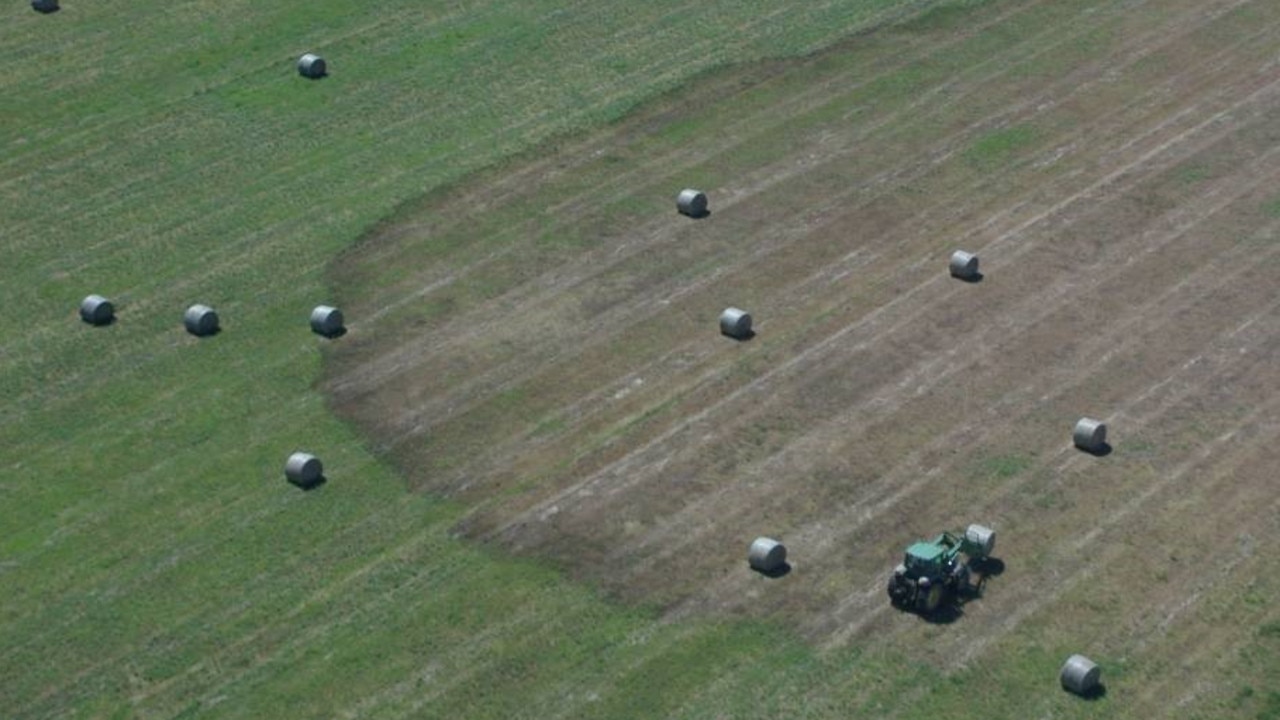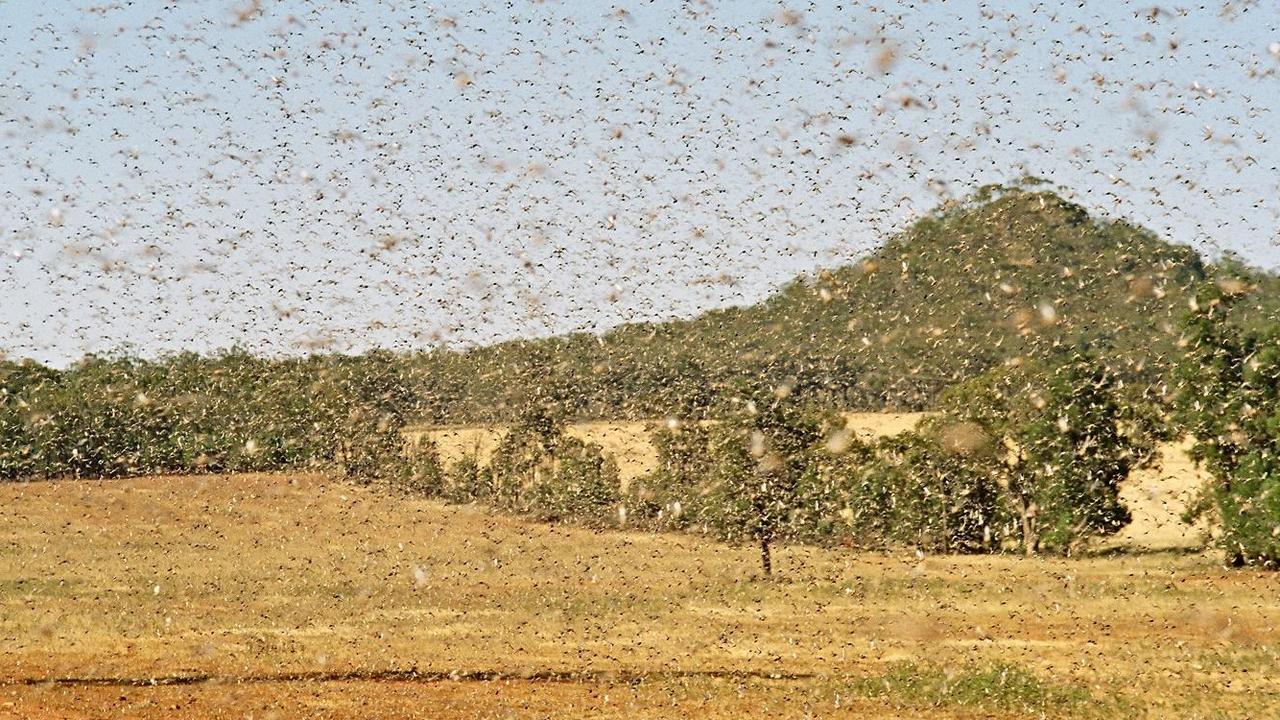Fears as plague locusts ‘clusters’ spotted in Victoria
It’s all getting very biblical in Victoria with “clusters” of plague locusts appearing raising fears the pests could swarm.
2020 just keeps on delivering. Following bushfires and coronavirus, now Victoria has become a destination of choice for plague locusts.
Agriculture Victoria warned yesterday that the native locusts had been spotted in western and north western parts of the state from Mildura down to Ararat and Echuca.
“Do not underestimate the damage from either hoppers or adult locusts on crops or pastures,” the state government body said.
Locusts are likely to be more abundant this year, and have travelled further south, due to the wet weather.
“The higher than average rainfall in eastern Australia due to the La Niña weather phenomenon has produced an abundance of green feed, which has contributed to the high survival rates of hatchlings from the overwintering eggs laid in the autumn,” Agriculture Victoria said.
Plague locusts have been found in west and north-west Victoria. Report locusts on your land to 136 186. For more information visit: https://t.co/nzCZ38JVoC pic.twitter.com/Vi5ODEjoT0
— Agriculture Victoria (@VicGovAg) November 18, 2020
The native Australian plague locust is a large insect that can vary from 20 to 45mm in length and is coloured brown to green. The wings have a dark spot near the tip.
The critters feed on emerging shoots from the soil which is also where they lay their eggs which first begin to hatch in spring but can continue until autumn. They can fly up to 20 kilometres in one day and often head in the direction of the coast.
Most years, the locusts are generally confined to inland and more regional parts of New South Wales and southern Queensland.

But if the conditions are right, like they appear to be in 2020, locusts from the Riverina and other parts of NSW can cross the border into Victoria. In the past they have even been seen in Melbourne.
One-by-one they are relatively harmless. But if they swarm they can cause real trouble. Large numbers of them can look like a giant carpet slowly gorging on a field.
Left to their own devices, plague locusts can munch their way huge amounts of crops.
One of the dangers of a swarm is driving through them as there can be so many they can reduce the driver’s view out of the windscreen. They can also get sucked into the radiator leading the car to overheat.
Motorists are advised to slow down, turn on the headlights and use windscreen wipers to remove the locusts.
La Nina years are not just good for locusts, they are pretty good for mosquitoes too with warnings of an explosion of the buzzing pests.
RELATED: Unexpected effect of La Nina climate driver


Agriculture Victoria has said that, at the moment, the locusts have caused “small local clusters,” rather than swarms.
However, if the warm and wet weather continues, the problem could get worse.
“Control of the current spring generation and forthcoming summer generation is important to managing the risk of heavy egg laying in autumn and the potential for a large population build up leading into the 2021 — 2022 season.”
Agriculture Victoria has said anyone who sees locusts should contact the organisation so it can monitor the populations.
However, Agriculture Victoria did make one thing clear. While there may be sightings of the plague locust, “there is no locust plague”.
If there was it would be called a plague locust plague.




